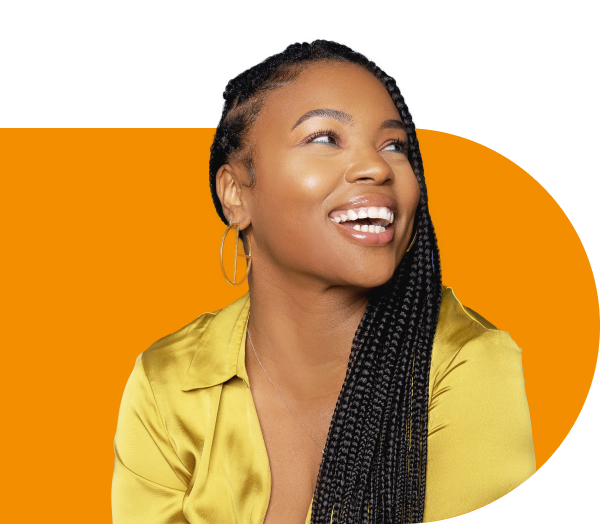How To Build Your Personal Brand On LinkedIn
RECRUITMENT • Sep 13, 2022

There’s no questioning the power of a good first impression – most of us will form an opinion of someone within seven seconds of meeting them. Online, the time you have to impress could be as little as two-tenths of a second, according to research. That means when it comes to engaging potential clients and business associates online, you’ll need a powerful and effective strategy. That’s where personal branding comes in.
What is personal branding, and why is it important?
Personal branding is the process of defining who you are and what you stand for to the rest of the online community, and is a summation of the values, skills and experiences that differentiate you as an individual. For salespeople, freelancers, and solopreneurs, building a stellar personal brand is an important part of forming relationship with clients. For the rest of us, personal branding is still important in helping to forge connections, improve confidence, and open the door to new opportunities.
Although it’s a good idea to think about your personal branding on all platforms, LinkedIn should be your primary focus – especially if you’re looking to win new clients or find a new job. Just under 50% of the UK population is registered on the platform, six people are hired through the social media platform every minute, and 77 job applications are submitted every second. So, how can you go about polishing your personal brand to perfection? Let’s take a look.
1. Optimise your profile for search
First thing’s first – you need to get the basics right.
Your LinkedIn profile picture should form an integral part of your personal branding. You want to show that you take your role seriously, but that you’re also friendly and human. Ensure you look professional, approachable, and wear something sensible – and don’t be afraid to showcase your personality a little.
Next, you’ll want a killer headline. You have 50 words or fewer to describe yourself, so be selective, and decide on a few words that sum up who you are and what you do in plain English – no business jargon.
Use popular keywords that are specific to your sector throughout your LinkedIn profile, as this will help your profile to show up more regularly within searches. Try to keep your language clear and concise, as this will make it easier for clients and recruiters to find you and understand what you have to offer.
Fill out the ‘skills’ section with your strongest, most relevant abilities. After you’ve done this, you’ll be able to receive ‘endorsements’ from others within your network who can testify to your talents.
Take advantage of lesser-known tools to make your profile more accessible. For instance, on the top right of your profile, there’s the option to add your profile in another language, and in the mobile app, you can also record the pronunciation of your name if you find it’s one that people often struggle with.
2. Make the right connections
Expanding your network is possibly the most important aspect of LinkedIn. Not only can making relevant connections help you to understand what’s going on within your industry, it can also determine how easily you can find people and they can find you. Don’t fall into the trap of simply sending out as many connection requests as possible. Instead, try to make them count. Start with people you’ve worked with previously, or who currently work at the same organisation as you. After that, start joining relevant groups, and taking part in conversations – this is a great way to start interacting with people within your sector you may not otherwise have encountered. Don’t be afraid to add people you don’t know personally if you think a connection would be mutually beneficial, just be sure to personalise your request by explaining who you are and why you’re adding them. Finally, when you’re networking in the real world, be sure to make a note of the names of people you meet so you can connect with them on LinkedIn later.
3. Create high quality content
If you’re not creating meaningful and engaging content on LinkedIn, you’re only tapping into half the potential the platform has to offer. It isn’t enough to just have a fully optimised profile and hundreds of connections, you also need to be regularly communicating with your target market. For example, LinkedIn has a blog feature which allows you to create articles with imagery and easily share. You can also share photos, documents, videos, polls… the list is endless, and you should aim to be as creative and original as possible. Instead of copying what your competitors are doing, try to have a niche that allows you to stand out from the crowd. Don’t be afraid to get personal and speak about real experiences – the highest performing posts on LinkedIn tend to be those that allow users to make an emotional connection with the reader.
4. Experiment!
Creating high-quality content is all about mixing it up. If you find your regular posts aren’t receiving much engagement, try experimenting. Creating a short, snappy 30-second video is a great way to catch the attention of others – you can even use free video editing software to add graphics and cutaways. Before you post, be sure to also add subtitles for the benefit of people who are hearing-impaired or are scrolling through LinkedIn without their sound turned on. You might also consider sharing some insights from your personal life, such as pictures and videos from a recent holiday, or pictures of family members. This gives people an insight into who you are as a person, as well as a professional.
5. Engage meaningfully with others
A good place to start is by following hashtags that are especially relevant to you, your industry, or your brand. To do this, just enter a hashtag at the top of the page, click on a hashtag on one of the posts that appear, and hit the follow button. From there, you can start liking posts, and adding thoughtful commentary when you have something to add to the conversation. Good comments will often lead to thought-provoking conversations, which will allow you to showcase your knowledge with a wide audience. Additionally, remember to spread positivity. Congratulate others on new jobs, promotions and other life events, and tag them to maximise visibility and demonstrate respect. You’ll likely find they’ll return the favour in the future.
Above all, remember to be consistent – Rome wasn’t built in a day. Like anything, in order to get results, you’ll need to be posting and engaging in conversation regularly in order to gain real engagement. Additionally, it’s important to be authentic. Your audience wants to see the person behind the professional, so adding some humour as well as sharing your struggles is to be encouraged. It might feel uncomfortable to share your opinions and thoughts with the world at first, but soon enough, it will become second nature. LinkedIn is a powerhouse tool that’s at your fingertips – so make it work for you!
Looking to leverage your personal brand to find a new job? You’re in the right place. We’ve hundreds of positions available in industries such as accountancy, human resources, marketing and digital, IT, and many more. Alternatively, you can search all our positions here, or register with us.





